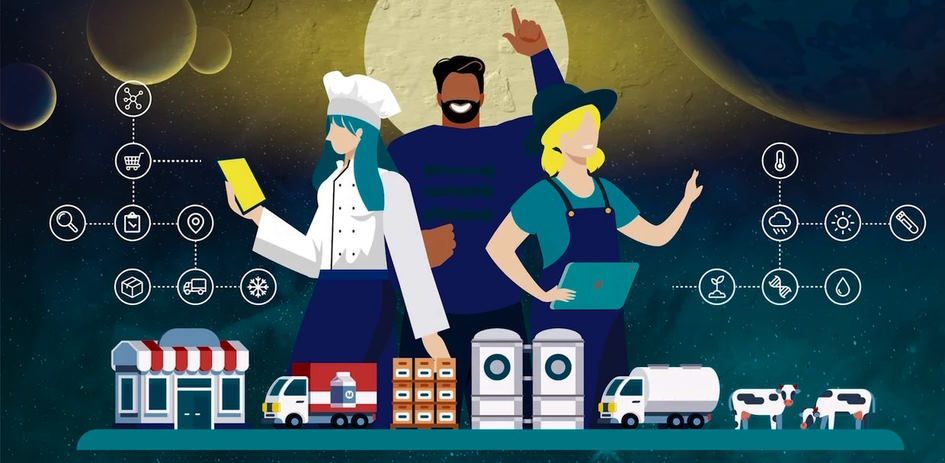The restaurant industry plays a significant role in shaping our food system and has a profound impact on the environment and society. As consumer awareness about sustainability and environmental issues continues to grow, restaurants are increasingly being called upon to adopt sustainable practices that promote long-term social, economic, and environmental well-being. From sourcing local and organic ingredients to reducing food waste, conserving energy and water, and implementing sustainable packaging, there are numerous practices that restaurants can adopt to promote sustainability. By prioritizing sustainability, restaurants can not only contribute to a healthier planet but also attract environmentally-conscious customers and position themselves as leaders in the industry.
From Farm to Fork: Exploring Sustainable Sourcing in the Restaurant Industry
Sustainable sourcing is a fundamental practice for restaurants looking to make a positive impact on the environment and society. By using locally sourced, organic, and sustainably grown ingredients, restaurants can play a crucial role in promoting sustainability in the food industry. Supporting local farmers not only helps reduce the carbon footprint associated with long-distance transportation but also contributes to the local economy and fosters a sense of community. Many successful restaurants have embraced sustainable sourcing as a core value, setting an example for others in the industry. By prioritizing sustainable sourcing, restaurants can not only serve high-quality, nutritious food but also contribute to a more sustainable food system, benefiting both the planet and the local community.

Sustainability in the Restaurant Industry through Waste Reduction Strategies
Waste reduction is a critical aspect of sustainability in the restaurant industry. With the global issue of food waste gaining increasing attention, restaurants have a responsibility to implement strategies to minimize their contribution to this problem. Proper inventory management and portion control are effective strategies that can significantly reduce food waste in restaurants. By accurately tracking inventory and monitoring portion sizes, restaurants can avoid over-purchasing and prevent excess food from going to waste.
In addition to inventory management and portion control, innovative ways to repurpose food scraps can also make a significant impact. Composting is a sustainable solution that turns food scraps into nutrient-rich soil, which can be used in gardening or donated to local farms. Some restaurants have also taken creative approaches by using food scraps to create new menu items, such as using vegetable trimmings to make soups or creating a “nose-to-tail” approach with meat cuts.
Several successful restaurants have already implemented effective waste reduction practices. For instance, some restaurants have formed partnerships with local food banks or organizations that rescue surplus food and redistribute it to those in need. Others have implemented composting programs or collaborated with local farmers to donate food scraps for animal feed. These case studies serve as inspiring examples of how restaurants can reduce food waste and make a positive impact on the environment and society. By adopting waste reduction practices, restaurants can contribute to a more sustainable food system and set an example for others in the industry to follow.

Driving Green Dining: A Closer Look at Energy Efficiency in the Sustainable Restaurant Industry
Conserving energy is a critical aspect of sustainability in the restaurant industry. Restaurants are known to be energy-intensive operations, with significant energy consumption associated with cooking, refrigeration, lighting, and heating/cooling. Implementing strategies to reduce energy consumption can not only lower operational costs but also contribute to a more sustainable future.
One effective strategy for reducing energy consumption is using energy-efficient appliances and LED lighting. Energy-efficient appliances, such as refrigerators, ovens, and dishwashers, are designed to use less energy while maintaining optimal performance. LED lighting is another energy-efficient option that can significantly reduce electricity usage compared to traditional incandescent bulbs. By investing in energy-efficient equipment and lighting, restaurants can lower their energy consumption and reduce their environmental impact.
Several restaurants have successfully implemented energy-saving measures to promote sustainability. For example, some restaurants have installed motion sensors or timers to control lighting, ensuring that lights are only used when needed. Others have upgraded to energy-efficient appliances, such as ENERGY STAR-certified equipment, to reduce energy usage while maintaining high-quality food production. These success stories highlight the positive impact that energy-efficient measures can have on both the environment and a restaurant’s bottom line.
In addition to reducing energy consumption through equipment and lighting upgrades, restaurants can also implement operational changes, such as regular maintenance of equipment, optimizing kitchen ventilation, and training staff on energy-saving practices. By adopting a comprehensive approach to energy efficiency, restaurants can significantly lower their energy consumption, reduce their carbon footprint, and contribute to a more sustainable future for the foodservice industry.




